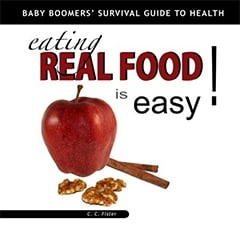
Claims: The author claims "removing the toxins of processed food and replacing it with real food allows your body to absorb the good stuff it needs to heal and become healthy again" and that "you’ll learn how to rid yourself of gingivitis, acid refl ux, anxiety, arthritis and many more bothersome conditions."
Synopsis of the Diet Plan: The Actions chapter focuses on simple, sound advice such as drinking more water, eating breakfast, keeping a food journal and walking daily, while the Food Charts section recommends different foods to help improve different health conditions. The Surprising Results section focuses on the author’s personal experiences with topics such as “oil pulling.” The Food Choices chapter includes simple, nutritious recipes for meals, snacks, sauces and seasoning mixes.
Nutritional Pros and Cons: The author does not have a formal background in nutrition and the content is based on her own experiences in changing her diet and lifestyle. Although many of her claims lack scientific evidence, most of her recommendations are solid. For example, the Food Charts section shows connections between a variety of foods and conditions— some that have proven connections and some that do not. However, overall, most of the foods recommended are nutrient-rich foods and therefore provide health benefits, even if they aren’t the same benefits identified on the charts. The author often refers to “removing chemicals from your diet” by eating fewer processed foods and attempts to bust myths about healthy foods being too expensive and time-consuming.
Bottom Line: The book is a strange blend of mostly practical tips based on some unfounded health claims. Most people would benefit from many of the author’s suggestions, but may fi nd the science behind her recommendations a bit misleading.
